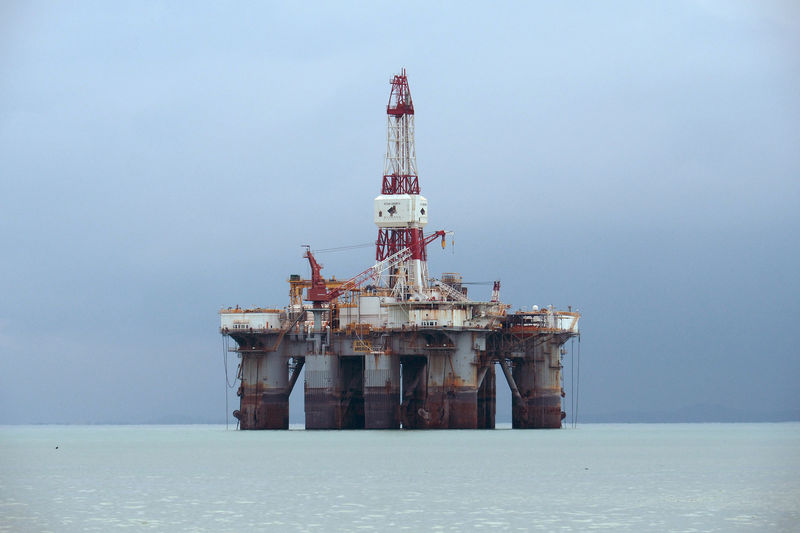(The opinions expressed here are those of the author, a columnist for Reuters.)
* GRAPHIC: Oman premium over WTI widens: http://reut.rs/2BbGXxo
By Clyde Russell
LAUNCESTON, Australia, Dec 12 (Reuters) - The shutdown of Britain's largest crude oil pipeline is an early Christmas gift to U.S. exporters shipping to Asia, and a complication for Middle Eastern and African producers seeking to maintain market share in the world's top importing region.
The Forties Pipeline System, which carries about 450,000 barrels per day (bpd) from the North Sea to Scotland, may be closed for several weeks for unscheduled repair work, operator Ineos said on Monday. crude is the largest of the five North Sea crudes that make up the dated Brent price benchmark.
Brent crude futures LCOc1 jumped 2 percent on Monday to settle at $64.69 a barrel, their highest in 2-1/2 years.
But given the price spike is related to an actual physical supply issue, the price of competing U.S. West Texas Intermediate (WTI) CLc1 crude wasn't as affected. It rose by only 1 percent to end at $57.99 a barrel on Monday.
This widened the premium of front-month Brent over WTI CL-LCO1=R to $6.74 a barrel, up from $4.76 as recently as Nov. 24. The spread is closing in on the $7.07 touched in September when Hurricane Harvey knocked out U.S. Gulf Coast refineries, temporarily cutting crude demand.
The blowout of the Brent-WTI spread in September saw a flood of U.S. crude head toward Asia, with vessel-tracking data showing that top global crude buyer China imported a record 293,000 bpd in November.
This pace is likely to be maintained in December, with data from Thomson Reuters Oil Research and Forecasts showing China is set to import 281,000 bpd from the United States this month.
The flows may ease in January and February in line with the lower Brent premium over WTI that prevailed when cargoes would have been booked in November.
They are likely to pick up again, though, as the economics move in favour of WTI-priced oil over Brent-priced equivalents.
MIDDLE EAST CRUDE IMPACT
While it's true that the higher Brent price is mainly an issue for African exporters such as Angola and Libya, the flow-on effect on other crude benchmarks is likely to hit major Middle East exporters as well.
This is because Middle Eastern crudes are becoming more expensive vis-a-vis WTI as well.
The main regional futures contract, Dubai Mercantile Exchange's Oman 1OQc1 , has been following Brent more closely than WTI.
The contract closed on Monday at $62.20 a barrel, matching the 2-1/2-year high reached on Nov. 6.
This put Oman at a premium of $4.21 a barrel to WTI, well above the 52 U.S. cents that prevailed at the end of last year and the 42 cents on June 30.
Oman is more of a benchmark for Middle East heavy crude grades, as opposed to WTI being a light, sweet crude.
The wider the premium of Oman over WTI, however, the more likely refiners in Asia that can be flexible with their crude slates will seek to switch to oil priced against WTI.
This will especially hurt the top exporters in the region restricting output as part of the agreement by the Organization of the Petroleum Exporting Countries (OPEC) and its allies to cut production by a combined 1.8 million bpd.
So while the Forties pipeline outage has given an immediate lift to U.S. crude exporters, it will also likely prove helpful to other producers who didn't sign on to the OPEC and allies agreement, such as Brazil and Canada.
Saudi Arabia has also recently been raising its official selling price (OSP) to customers in Asia, which account for about two-thirds of the kingdom's exports.
The OSP for its benchmark Arab Light grade (which is actually a medium-heavy crude), was increased for January-loading cargoes by 40 cents a barrel to a premium of $1.65 a barrel over the average of Oman-Dubai prices. Saudi pricing generally reflects prevailing market conditions, the rising premium will effectively make the kingdom's oil even more expensive relative to competing grades in Asia.
The Saudis could not have predicted the Forties outage when they released their January prices on Dec. 5, but the event has most likely made their crude less competitive in Asia.
<^^^^^^^^^^^^^^^^^^^^^^^^^^^^^^^^^^^^^^^^^^^^^^^^^^^^^^^^^^^ GRAPHIC: Oman premium over WTI widens
http://reut.rs/2BbGXxo
^^^^^^^^^^^^^^^^^^^^^^^^^^^^^^^^^^^^^^^^^^^^^^^^^^^^^^^^^^^> (Editing by Tom Hogue)
